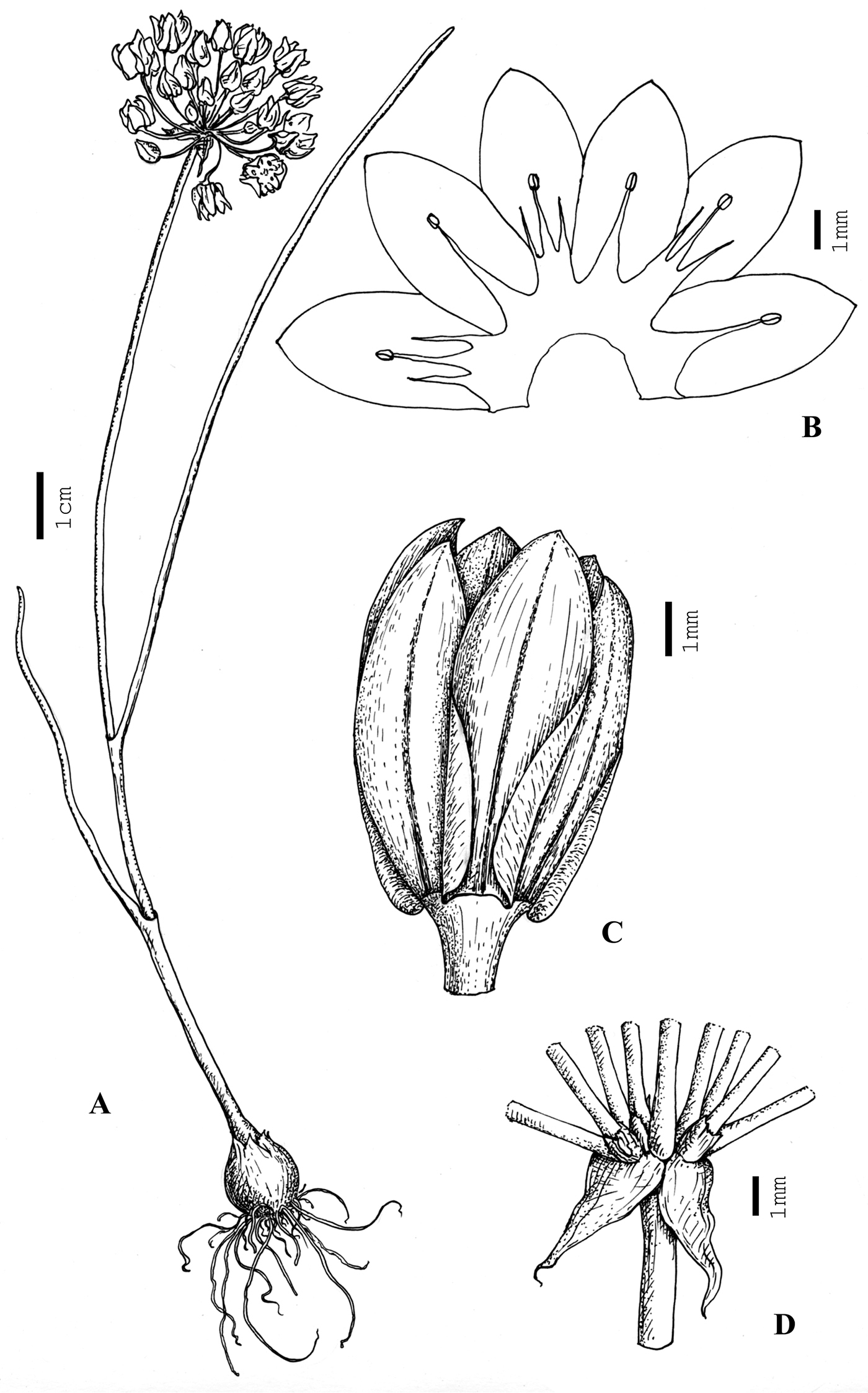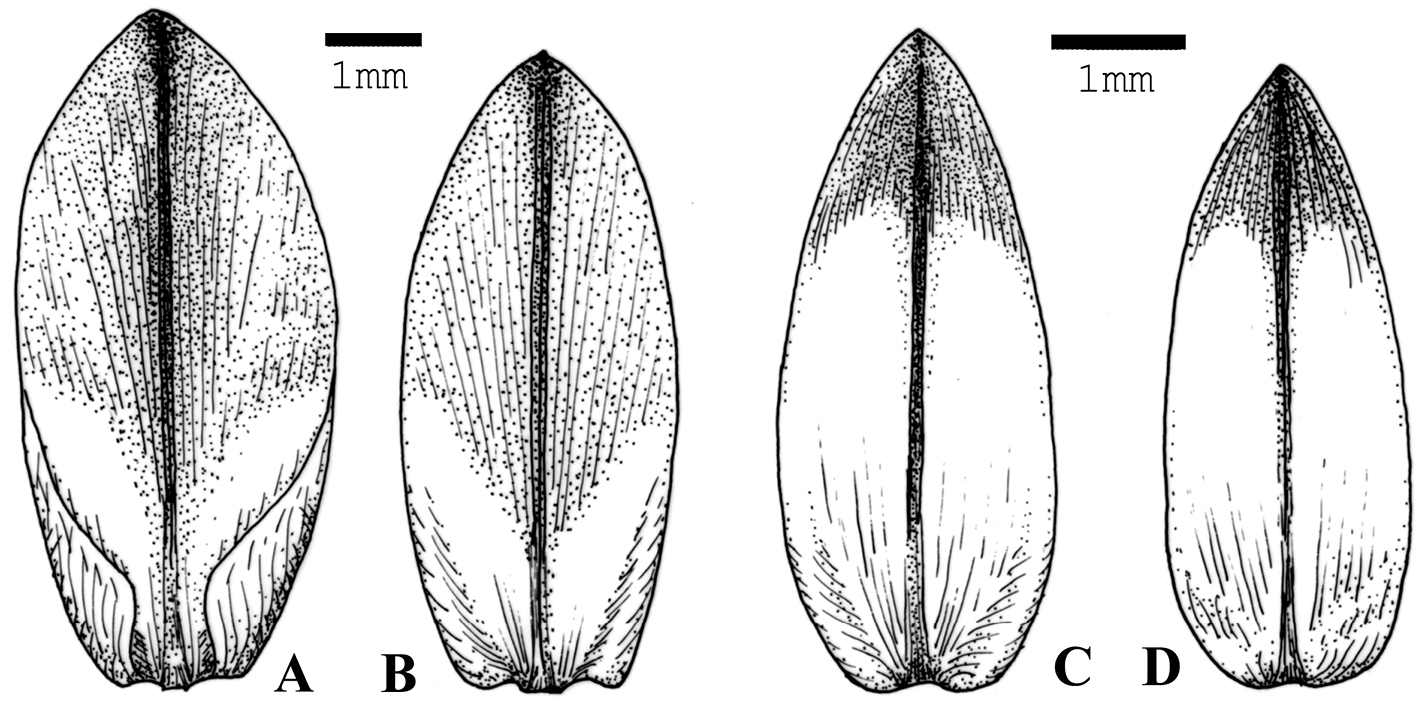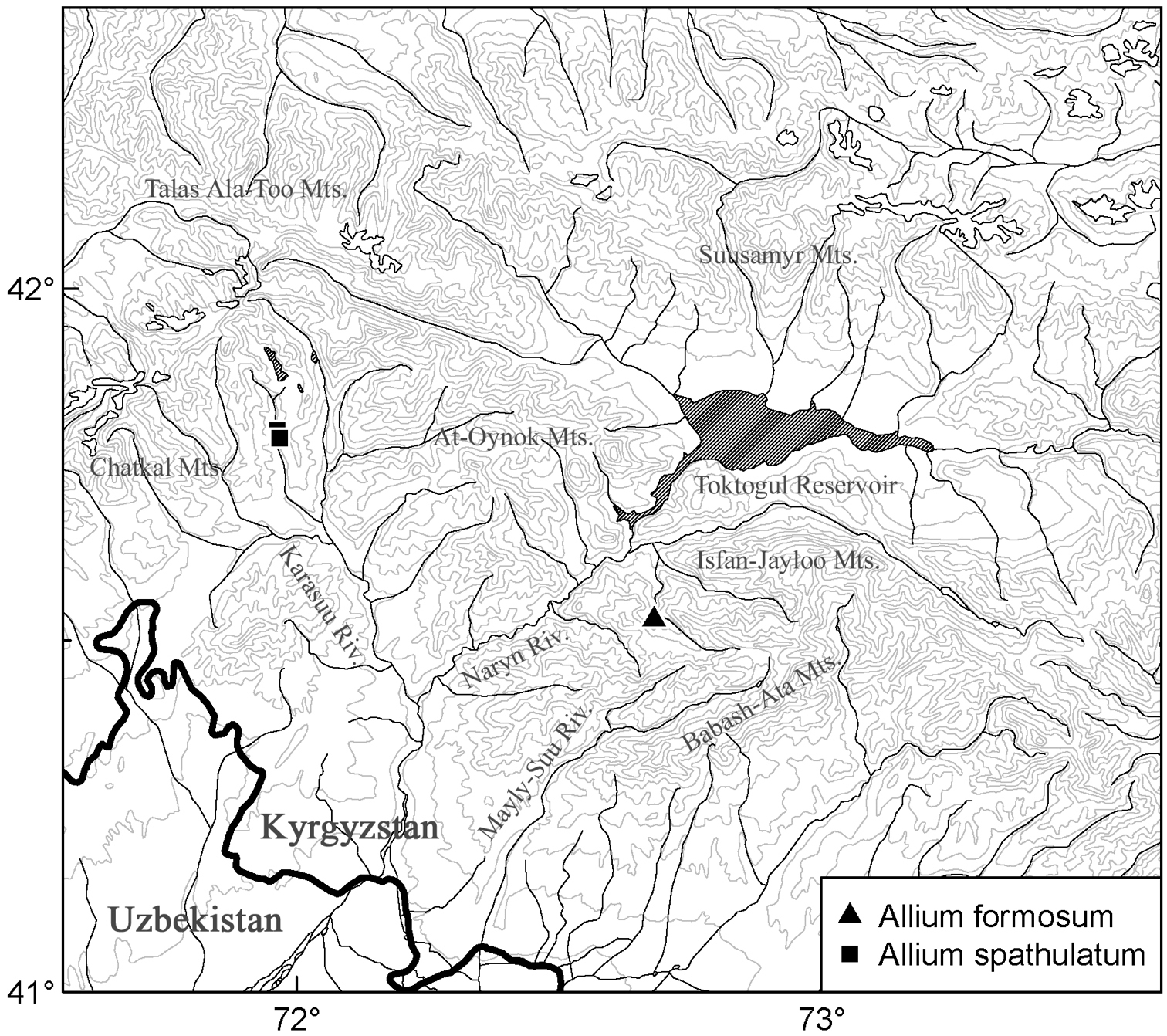






(C) 2013 Alexander N. Sennikov. This is an open access article distributed under the terms of the Creative Commons Attribution License 3.0 (CC-BY), which permits unrestricted use, distribution, and reproduction in any medium, provided the original author and source are credited.
For reference, use of the paginated PDF or printed version of this article is recommended.
Allium formosum Sennikov & Lazkov sp. nov. is described as new to science and illustrated. This species is the second member of Allium sect. Spathulata F.O.Khass. & R.M.Fritsch, being different from Allium spathulatum F.O.Khass. & R.M.Fritsch in larger, broader, obtuse and more intensely purple-coloured tepals, and in a more robust habit. It is a local endemic of Babash-Ata Mt. Range situated east of Fergana Valley in Kyrgyzstan, recommended for legal protection as Endangered because of the very small population size in its only locality.
Central Asia, conservation, endemism, hotspot, new species, plant protection, Western Tian-Shan
The genus Allium L. is highly speciose in the former Soviet part of Central Asia. The latest synopsis (
Kyrgyzstan is a Central Asian country with a rich native flora, assessed at nearly 3800 native species of vascular plants (
During the years 2009–2011 botanists of the Botanical Museum of the University of Helsinki, in collaboration with the Institute of Biology and Soil Science of the Kyrgyz Academy of Sciences, made expeditions to collect plants in Kyrgyzstan. The expeditions focused on the most difficult and diverse taxonomic groups, with emphasis on local endemics. Several taxonomic novelties and new records resulted from these travels (
Allium sect. Spathulata was established (
When originally described, Allium spathulatum was considered unique in Allium subgen. Allium because of the presence of spathules and papyraceous tunics, ovoid bulbs, and the absence of bulblets (
A description of the new taxon and its relative is based on herbarium vouchers and field observations, following the standard used in the taxonomy of Allium. One population per species is used. Measures are taken from dried plants.
Distribution maps are compiled using R software environment for statistical computing and graphics (
Specimen information is deposited in the database of records in vascular plants of Kyrgyzstan (
urn:lsid:ipni.org:names:77126319-1
http://species-id.net/wiki/Allium_formosum
Fig. 1Ab Allio spathulato statura majore (caulibus ad 30 cm, nec ad 20 cm altis), spathulis brevioribus paucioribus, floribus pluris (ad 30, nec ad 20), tepalis obscuriore roseolo-purpureis, longioribus (6–7.5 mm, nec 4–5.5 mm longis) latioribusque (2–2.5 mm, nec 2 mm latis), apice obtusioribus (nec acutis) basi subrotundis (nec distincte angustatis) differt.
Kyrgyzstan. Babash-Ata Range: Kara-Köl River valley, left riverside, alt. 1650 m, 41.53°N, 72.68°E, 14.07.2010, A. Sennikov & G. Lazkov 132 (H 1750496, holotype; isotypes FRU, H 1750497).
Bulbs subglobose, 7–8 mm in diameter, ca. 8 mm long, inner tunices slightly violaceous, very thin, transparent, papyraceous, with several longitudinal nerves, outer ones light-grey, decomposing. Bulblets missing. Scape single, 20–25 (30) cm long, up to 1.5 mm in diameter, solid, dark green with a slight purple tint at the base. Leaves 2(3), linear, not exceeding the stems, upright, with the blade up to 20 cm long, ca. 1.5 mm wide, round-appressed and fistulose in the section, dark green, glabrous, with sheaths up to 10 cm long. Spathe membranous, completely divided into two elongate valves 4–6 mm long, reflexed. Inflorescence hemisphaerical, rather lax, with 7–30 developed flowers and ca. 5 abortive buds; pedicels thin, basally thickened, straight, dark-green, of the same length, ca. 1.5 cm long, some of them being embraced in narrow spathules ca. 1 mm long. Perianth cupuliform, intensively pinkish-purpureous in the upper two thirds, basally whitish, with dark-purpureous median veins. Tepals 6–7.5 mm long, 2–2.5 mm wide, oblong, obtuse at the apex, subrotund and only very slightly narrowed to the base. Filaments shorter than tepals, 2.5–3 mm long, white, connected and fused with sepals at the base, outer ones with the triangular base, inner ones broader, tricuspidate. Anthers ca. 0.4 mm long, yellow. Ovary ca. 2 mm long, 2–2.5 mm in diameter, subglobular. Style slightly over 1 mm long, white. Capsule and seeds not known.
Allium formosum. A habit. B inner side of the perianth with stamina. C flower. D basal part of the umbella. Drawn from the type (H 1750496).
Allium formosum. A outer tepal B inner tepal. Drawn from the type (H 1750496). Allium spathulatum C outer tepal D inner tepal. Drawn from Lazkov s.n. (H 1750506).
Flowering in July, fruiting unknown.
The species occurs in the low-altitude forest zone (altitudes of ca. 1600–1700 m) in river valleys, on open sunny slopes with sparse savannoid vegetation, sheltered by stones. The plants grow clustered in small patches, suggesting the most successful establishment nearby mature plants (vegetative reproduction is not known in this section).
Possibly a narrow endemic of Babash-Ata Mt. Range, Kyrgyzstan (Fig. 3), so far known from the type locality only.
Distribution areas of Allium formosum and Allium spathulatum.
The distribution area of this species is like those of other local endemics of the mountains east of Fergana Valley. A single locality is known, where ca. 10 clusters of flowering plants were noticed. Even though no immediate threat was observed, the area is in active use, first of all for grazing and mining. For this reason and because of the very limited distribution area and a small size of the only population known to date (criterium D: population size estimated to number fewer than 250 mature individuals), this taxon may be recommended for protection as Endangered (
The new species is named because of its elegant habit and beautiful colouration of the perianth, transitional between deeply pink and purple; Lat. formosum = beautiful.
Allium spathulatum F.O.Khass. & R.M.Fritsch has been recently described from Chatkal Range, Sary-Chelek Nature Reserve, vicinities of Arkyt village (
The plants from Babash-Ata Mts., Kara-Köl River differ from Allium spathulatum mostly in having longer and broader tepals, which are obtuse at the apex and less narrowed to the base (Fig. 2), and in a larger size of the whole plant. The flowers seem to be more numerous. Some pedicels are embraced by spathules which are generally less developed (shorter and less numerous) than in Allium spathulatum. These differences warrant the segregation of these plants into a separate taxon; the rank of species is preferred here because the differences are complex and constant. Another example of a similar distinction in the floral characters is the Central Asian pair Allium tianschanicum Rupr. – Allium kokanicum Regel, where major differences are also in the size and shape of tepals.
Another difference is observed in the shape of flowers which open less widely and thus look cupuliform in Allium formosum (campanulate in Allium spathulatum). However, this difference may appear dependent on weather conditions and needs to be proven by further observations.
The distance between the localities of Allium spathulatum and Allium formosum, both narrow endemics of mountains surrounding the eastern end of Fergana valley, is about 60 km (Fig. 3). The area of the eastern part of Chatkal Range and the northern outliers of Fergana Range (Babash-Ata and neighbouring mountains) is well known for the concentration of many narrow endemics, being a hotspot of plant diversity in Western Tian-Shan (
The present state of the Allium research in Central Asia, especially descriptions of new species that are still regularly published, clearly show that the species inventory in this speciose and difficult genus is far from complete. In the absence of elaborated molecular phylogenies we feel premature to speculate on the origin and age of our newly discovered species.
| 1 | Plants up to 20 cm tall. Tepals narrowly oblong, 4–5.5 mm long, 2 mm wide, acute at the apex and narrowed to the base, pinkish in the upper third | Allium spathulatum |
| – | Plants up to 30 cm tall. Tepals oblong, 6–7.5 mm long, 2–2.5 mm wide, obtuse at the apex, subrotund and very slightly narrowed to the base, intensely pinkish-purpureous in the upper two thirds | Allium formosum |
Allium spathulatum F.O.Khass. & R.M.Fritsch
Kyrgyzstan. Chatkal Range (S side): immediately S of Sary-Chelek Nature Reserve, left side of Kojo-Ata River valley, on rocks, 41.7° N, 71.9° E, 10.06.2010, G. Lazkov (FRU, H 1750495, 1750506).
We are grateful to Sampsa Lommi (Helsinki) for the distribution map. Nijolė Kalinauskaitė (Helsinki) performed the drawing of the plant habit and Mikhail Kozhin (Moscow) has skilfully drawn the tepals. The field trip to Kyrgyzstan in 2010 was supported by Millennium Seed Bank (to G.L.) and Botanical Museum of the University of Helsinki (to A.S.). The text benefited from critical comments of two anonymous reviewers and the editors.


